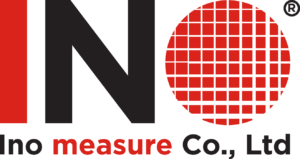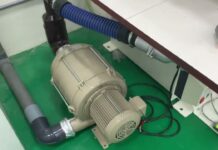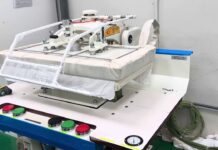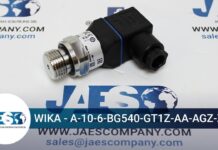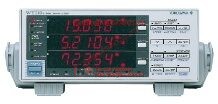| An oscilloscope is an indispensable part in any R&D centre or lab. It is used as an observational tool, allowing technicians to view signal voltages that oscillate constantly (hence the name). They are typically small, but some designed for laboratory use are larger, especially older models. Meanwhile, the emergence of LCD technology has led to the creation of small, handheld oscilloscopes as well. |
Rapid technology changes in end user markets such as communications, computers, consumer electronics, aerospace, defence and so on, are making it difficult for oscilloscope vendors to keep pace. Moreover, with increasing competition, companies are coming up with newer products with added features and innovations.
Types of oscilloscopes
We can broadly categorise oscilloscopes (also known as scopes) into real time and sampling scopes. Here we will talk about the different types of real time scopes, which are broadly categorised as modular or PC based handheld scopes, basic benchtop scopes and high end benchtop scopes.
While handheld or modular models are best suited for manufacturing, production lines, automation or field usage, benchtop or low end scopes find their applications in academia, repair/calibration/maintenance centres and for general purpose debugging. However, the high end benchtop scopes are used in the semiconductor industry, R&D centres and in the defence sector.
Thanks to ever changing technology that requires better testing solutions, oscilloscopes are also undergoing quick technological changes—evolving from a cathode ray oscilloscope (CRO) that helped in measuring live signals, to digital signal oscilloscopes (DSO) and mixed signal oscilloscopes (MSO) that extend to not just measuring but also recording and subsequent analysis. CROs are usually used in technical labs and institutes, but demand for DSOs and MSOs is rising fast.
“With the needs of design engineers becoming more complex, and with companies getting conscious about quality checks, the demand for DSOs and MSOs is increasing,” informs Manish Kwatra, managing director, Metro Electronic Products. With its brand MetroQ, the company deals in various types of oscilloscopes.
What’s new in the market?
With new application areas, new technologies and complex electronic products, the potential of oscilloscopes has grown. It has evolved from being a system dedicated to viewing waveforms to an operating system based device with various software features.
Today the market offers oscilloscopes with analogue channels (2 or 4) as well as digital channels (up to 16) in a single instrument. Inbuilt function generators and hard disks, advance triggering options, faster update and sampling rates, more storage and memory, touchscreens, low noise, serial data analysis tools, the Windows platfom, and increased bandwidth (ranging from 50 MHz to 32 GHz) are some of the new features that have helped in faster operations in a wide variety of applications.
“Today, customers can get 10 different application software packages in a single scope, which allows them to cover a range of different tasks. Our new MSO/DPO 5000 series mixed signal oscilloscope platform provides engineers the analysis functionality and performance they need for a number of applications, all in one instrument,” informs Sai Venkat Kumar, Pacific marketing, Tektronix India Pvt Ltd.
The MSO/DPO 5000 series has a very fast waveform acquisition rate of over 2,50,000 waveforms per second. It offers more than 350 trigger combinations, especially for high precision measurement.
Agilent Technologies’ InfiniiScan software enables an oscilloscope to identify signal integrity issues that hardware triggering is unable to find in electronic designs. This innovative software scans through thousands of acquired waveforms per second to help isolate signal anomalies. “Designers who want quick identification of signal anomalies in their designs and who have traditionally relied on hardware triggering and deep memory to capture such illusive events, can now easily overcome the limitations of hardware triggering by using this software,” points out Sadaf Arif Siddiqui, senior technical marketing engineer, Agilent Technologies India Pvt Ltd.
Adding to the gamut of feature rich scopes is LeCroy Corporation’s highest bandwidth (45GHz) real time Wave Master 8Zi-A, a powerful mid-range oscilloscope. “Our new product, the WaveRunner 6Zi oscilloscope, offers pathbreaking features including a tilting display that helps designers choose the best screen orientation for viewing,” says Prabhanjana Rao, regional sales manager, India, ASEAN, ANZ, LeCroy Corporation.
Handheld oscilloscopes are also becoming equally feature rich. These battery operated portable instruments come in sealed, dust proof and drip proof cases to withstand harsh working environments. These devices not only help in troubleshooting but their long battery life and USB communications improve usability. The new Fluke Scopemeter 190 series II (handheld oscilloscope) offers four isolated floating channels that help in performing floating measurements on multiple signals while simultaneously viewing and measuring waveform amplitude, shape and timing differences between signals or four test points. “It includes two USB ports that help to easily transfer data to a PC or archive and to share waveforms,” informs Manjunath CS, business unit head, TTL Technologies Pvt Ltd. The company is an exclusive distributor for Fluke Corporation.
In the handheld sphere, scopemeters are the latest available in the market. These come with four input channels fully isolated from each other to perform differential floating measurements, a critical consideration for troubleshooting fixed installation three phase power electronic devices. With four channels, users can inspect input signals, output signals, feedback loops or safety interlocks simultaneously to solve problems like signal amplitude, shape variations, induced noise, disturbances across critical circuit nodes, signal timing measurements and synchronisation issues.
Rohde & Schwarz India Pvt Ltd, one of the leading suppliers of T&M intruments, has launched two new products. The RTO digital oscilloscopes combine excellent signal fidelity, high acquisition rate and realtime digital trigger system with a compact device format in 1 GHz and 2 GHz class. This offers hardware accelerated measurement and analysis functions provides an advanced user interface that makes these instruments really fun to work with. While the other midrange RTM oscilloscopes offer 500 MHz bandwidth, with a maximum sampling rate of 5 Gsample/s and 8 Msample maximum memory depth. Its display signals accurately with details and provides high time resolution, even for long sequences. Furthermore, characteristics such as low noise level and good channel to channel isolation ensure precise and reliable measurement results.
Aplab’s DSO D36000 series are high performance desktop two channel colour/mono DSO with bandwidths from 25MHz to 200MHz; sampling rates of 1GSa/s or 250 Msa/s; and a colour/mono LCD for bright clear display. It has a large memory depth of 4K points/channel.
The ELVISmx oscilloscope from National Instruments Systems (India) displays voltage data over time for analysis of one or two voltage measurements taken from the analogue input channels. The oscilloscope’s soft front panel provides scaling and position adjustment knobs for each of the two channels independently.
The digital oscilloscope DS1000CA series from Scientech Technologies Pvt Ltd comprises 2GSa/s real time scopes with a 50GSa/s equivalent sample rate, and up to 300MHz bandwidth. These high performance scopes not only capture real time instantaneous signals, but also observe details of repeated signals. Scopes from the DS1000A series have up to a 2000 wfms/s refresh rate, which enables users to capture instantaneous signals and abnormal signals quicker. This is because of an enhanced waveform capturing capability, and helps to expedite the course of circuit debugging.
New features in scopes
Today, scopes come with new features as per the requirements of different applications. Various application-specific compliance testing software (for standards) can be loaded on the oscilloscopes to cater to the needs of different market segments. Test software like certified wireless USB, FireWire iEEE 1394 a/b and USB 2 are used in computer electronics, whereas the digital video interface (DVI) and high definition multimedia interface (HDMI) find their use in media.
To make search and navigation easy, today, scopes are installed with advanced search and mark capabilities. This allows up to eight searches simultaneously. Besides, every instance of found events is marked, and a table listing information is found for each event. This, coupled with a multi-tier pan/zoom control set, not only makes search simple for users but also speeds up the process.
The equalisation techniques used in digital receivers are now being modelled in oscilloscopes. Equalisation software is used to quickly verify equaliser chip tap values.
Today, oscilloscopes also have inbuilt jitter measurement and analysis capabilities. Jitter is the unwanted part of the signal. It degrades the performance of the system and eludes troubleshooting efforts. New high performance DSOs/MSOs now use reference class ADCs that have a very low intrinsic noise.
The latest digital oscilloscopes are equipped with features like powerful trigger modes, which include edge, video, pulse width and slope. So they can be used for a variety of different applications. The latest scopes are also equipped with features like FilterVu to easily filter out unwanted noise without losing sight of important anomalies or glitches with the innovative peak detect glitch capture.
MagniVu technology, used in Tektronix’ series, allows high speed sampling architecture, which has dramatically improved the measurement capabilities of oscilloscopes. Scopes with MagniVu enable users to acquire fine signal details, and are essential for making accurate timing measurements for setup and hold measurements, clock delays, signal skews and glitch characterisation.
Technological innovations
Over the years, oscilloscopes have been undergoing technological innovations. The machines have changed in many ways—physically, they have become smaller and more portable. They have also changed in relation to design, with current models offering additional features. The most significant change is the transition from analogue to digital. Another significant innovation in oscilloscopes is the emergence of MSOs with both digital and analogue signals for debugging. An MSO is a combination of an oscilloscope and logic analyser. The advanced versions available in the market today come with pinpoint triggering.
“The latest innovation in MSOs is wave inspector automated search, which can instantly search the entire records, including analogue, digital and serial bus data,” says Sai Venkat Kumar.
A technological innovation from Agilent—MegaVision III/IV—results in a very fast update rate. While one can make a scope with more discrete functional blocks, performance is limited due to a variety of system integration issues. This brings higher performance across a very wide range of operating conditions, facilitating a better understanding of the system under test. According to Sadaf Arif Siddiqui, “By integrating, we can take advantage of higher performance internal busses, reaching market leading waveform update rate and signal visibility into users systems. This also lowers system power, space and cost.” He further adds, “The innovative chipset designed in Agilent’s proprietary high speed high voltage InP HBT resulted in a 32 GHz true analogue bandwidth scope. This real time oscilloscope family provides engineers with superb signal integrity for characterising and debugging the fastest interfaces.”
Price range
The prices of oscilloscopes vary depending on the features, quality and bandwidth. Prices vary not only between different brands but also for various models, depending on the specifications. “The starting range for a scope could be around Rs 16,000; however, the price of branded scopes can be anywhere between
Rs 50,000 to Rs 10 million or even higher,” informs Sadaf Arif Siddiqui. “The local scopes available in the market are cheaper than the branded ones. The prices here may vary between 25-30 per cent,” he adds.
Challenges faced by buyers
Customers do face problems while selecting oscilloscopes. One major dilemma is whether to opt for local, imported or branded models. Most customers go in for the branded scopes as the products are of good quality, are well priced and come with a warranty. They also have the advanced features as per industry standards. But technology comes with a price and in order to procure the latest scopes, buyers will have to shell out more money. However, in order to survive in the competetive market, the local manufactures are coming up with quality products at reasonable price.
The other issue faced by buyers is after sales service. “Chinese equipment is easily available at affordable prices; however, these instruments do not come with after sales service, so in case of a failure, the buyers are left with no options,” says Manish Kwatra. He adds, “Awareness about the reduced prices of scopes is another issue that buyers need to know more about. The basic coloured DSO with a USB interface is available for a starting cost of around Rs 16000 + taxes.”
Leading companies that deal in oscilloscopes
* Agilent Technologies India Pvt Ltd
* Aplab Limited
* Anritsu Pte Ltd India
* Fluke Corporation
* LeCroy Corporation
* MetroQ
* National Instruments Systems (India) Pvt Ltd
* Rohde & Schwarz
* Scientech Technologies Pvt Ltd
* Scientific Mes-Technik Pvt Ltd
* Tektronix India Pvt Ltd
* VTI Instruments
Buying tips
Many factors come into play when deciding what type of oscilloscope is best for your needs. There are many models, at different price points, with varying levels of complexity that you can choose from. Thorough research is the only way to ensure that you purchase a very good oscilloscope.
The most important thing to look for when purchasing your first analogue or digital oscilloscope are bandwidth, number of channels and sampling rates. These factors will affect the way you are able to measure a waveform made by the electrical signal being tested.
Other important factors that shouldn’t be ignored include memory depth, resolution, accuracy, triggering capability, connectivity, the probe requirements and ability to analyse data. A buyer should, therefore do the following:
* Check specifications like update rate, true bandwidth, samp ling rate, record length, etc
* Buyers should look for scopes that are user friendly
* They should check the screen size and resolution
* Confirm future upgradeability
* Check for I/O ports (USB, GPIB, LAN, etc) and connectivity with computers
* Look for application packages
* Check probes and accessories
* Confirm service, repair and warranty options
* Verify applications support
Related link
